Everything Gathers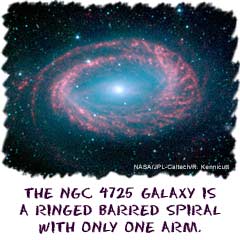 It seems that everything we talk about on Coasmos4Kids is coming together at one point or another. Stars are made of gas and dust that come together. Planets are bits of small rocks and asteroids that come together. Even galaxies are made of stars and systems that come together. Stars are constantly moving through the universe just like everything else. As they move, their gravity affects the neighbor stars. Slowly they came together (billions of years ago) and formed galaxies. It seems that everything we talk about on Coasmos4Kids is coming together at one point or another. Stars are made of gas and dust that come together. Planets are bits of small rocks and asteroids that come together. Even galaxies are made of stars and systems that come together. Stars are constantly moving through the universe just like everything else. As they move, their gravity affects the neighbor stars. Slowly they came together (billions of years ago) and formed galaxies.Lots And Lots Of StarsGalaxies aren't just a few hundred or a thousand stars working together. Some are made up of tens of millions of stars and systems. It is amazing that with all of these pieces, they only tend to form a few shapes. As galaxies spin, they form either spiral or elliptical shapes. Astronomers think that the elliptical galaxies are older than the spiral ones. There are also variations of each type. The Milky Way is currently thought to be a barred-spiral galaxy. That means we have a densely packed stellar bar in the middle of our spiral. | ||||
Thursday, 30 July 2015
Everything Gathers (galaxy)
Galaxies
Looking At Galaxies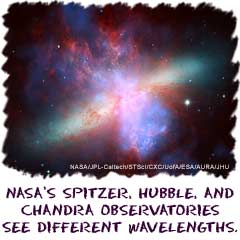 We've already covered the universe. Let's focus on something smaller, a galaxy. Right now, you're sitting on a planet that orbits a star in the Milky Way galaxy. As you know, there are loads of galaxies in the universe. Each is different from the other, like fingerprints. We're going to talk about a few of the common traits of galaxies and how you can look up in the sky and look for other galaxies. We've already covered the universe. Let's focus on something smaller, a galaxy. Right now, you're sitting on a planet that orbits a star in the Milky Way galaxy. As you know, there are loads of galaxies in the universe. Each is different from the other, like fingerprints. We're going to talk about a few of the common traits of galaxies and how you can look up in the sky and look for other galaxies.Grouping Stars And SystemsOrganized galaxies are made of millions of stars and systems. While we can't take a picture of our galaxy, astronomers use a variety of telescopes to study nearby galaxies. They use several wavelengths in the EM spectrum to see which stars are closer and further away. While you may think of Hubble's pictures that show visible light, great discoveries have been made by Spitzer studying galaxies in infrared light and Chandra detecting x-rays.More Than Meets The EyeAs astronomers have studied galaxies in detail, they have determined that there is more than dust, stars, and systems. They currently believe that about 90 percent of the matter in galaxies is called "dark matter." Dark matter is matter that does not emit any radiation that can be detected using current instruments. We know that dark matter exists because of the gravity exerted on other objects. If you want to work on the cutting edge of astronomy, you might want to look into the study of dark matter and dark energy. |
Monday, 27 July 2015
Fields Of Magnetic Forces
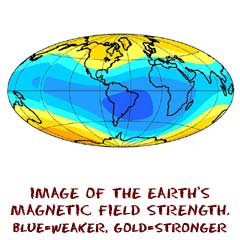 We glossed over the idea that the outer core of the Earth creates the magnetic field and the magnetosphere for the planet. How does it do it? The molten iron flows like a huge river. If you take a physics course, you'll learn that magnetism and electricity are very closely related. As the iron rivers flow, they create an electric current. That current creates the magnetic field that surrounds the planet. The magnetic field created in the center of the planet makes your compass point north and protects the Earth from solar winds.
We glossed over the idea that the outer core of the Earth creates the magnetic field and the magnetosphere for the planet. How does it do it? The molten iron flows like a huge river. If you take a physics course, you'll learn that magnetism and electricity are very closely related. As the iron rivers flow, they create an electric current. That current creates the magnetic field that surrounds the planet. The magnetic field created in the center of the planet makes your compass point north and protects the Earth from solar winds. 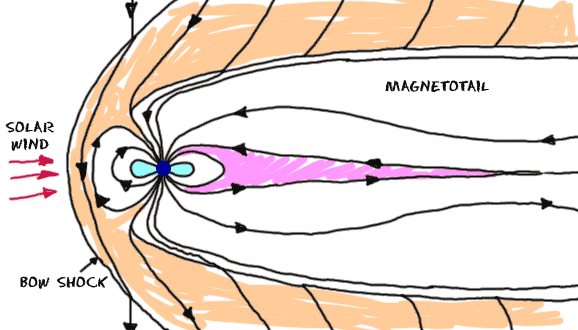
Energy Around Us
Energy Around Us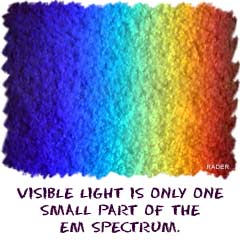 There are waves of energy and light moving around us in the form of TV and radio transmissions, gamma radiation from space, and heat in the atmosphere. Scientists call them all electromagnetic radiation. The waves of energy are calledelectromagnetic (EM) because they have both electric and magnetic characteristics. Physicists classify them by the frequency of their wavelength, going from high to low frequency. When a wave has a lot of energy, it could be a gamma ray or x-ray. If it has low frequency, it has less energy and could be a TV or radio wave. There are waves of energy and light moving around us in the form of TV and radio transmissions, gamma radiation from space, and heat in the atmosphere. Scientists call them all electromagnetic radiation. The waves of energy are calledelectromagnetic (EM) because they have both electric and magnetic characteristics. Physicists classify them by the frequency of their wavelength, going from high to low frequency. When a wave has a lot of energy, it could be a gamma ray or x-ray. If it has low frequency, it has less energy and could be a TV or radio wave.Structure of EnergyAll EM energy waves travel at the speed of light when in a vacuum. No matter what their frequency or wavelength, they always move at the same speed. Some properties of waves, such as diffraction and interference, are also seen in EM radiation. Scientists have figured out that there are tiny particles in these waves. The particles have been given the name photons. The photons are specific units or packets, of energy. Sometimes those particles interact with each other and change the way the light originally behaved.Detecting EnergyAll types of EM radiation are useful to the world of science. Look at radio waves as an example. Radio stations and ham radio operators of Earth work with radio waves every day. Radio waves are used to carry communications from one point to another. Radio waves are also extremely important to astronomers. Astronomers are constantly listening to the radio waves of other galaxies to learn more about their stars. Stars give off large amounts of EM radiation across the entire spectrum and we can study that radiation to learn more about the universe.Radiation Isn't Always a Bad ThingAn important idea you should always remember is that sometimes we use the word radiation. When you think of radiation, you probably think about nuclear power plants, bombs, and X-rays. Sure, those are all types of radiation. To physicists, all light is considered radiation. That means that everything from television and radio waves to gamma rays are types of radiation. Think about the word LASER. The R stands for radiation, while a laser is just a souped-up flashlight. Think about heat. Most heat is actually infrared light being given off by an object. That heat is also radiation. |
Sunday, 26 July 2015
Bose-Einstein Basics
Bose-Einstein Basics
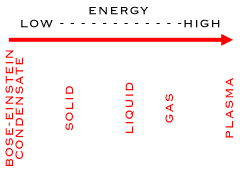 The Bose-Einstein state of matter was the only one created while your parents were alive. In 1995, two scientists, Cornell and Weiman, finally created the condensate. When you hear the word condensate, think about condensation and the way gas molecules come together and condense and to a liquid. The molecules get denser or packed closer together.
The Bose-Einstein state of matter was the only one created while your parents were alive. In 1995, two scientists, Cornell and Weiman, finally created the condensate. When you hear the word condensate, think about condensation and the way gas molecules come together and condense and to a liquid. The molecules get denser or packed closer together. Two other scientists, Satyendra Bose and Albert Einstein, had predicted it in the 1920s, but they didn't have the equipment and facilities to make it happen at that time. Now we do. If plasmas are superHOT
 and super excited atoms, the atoms in a Bose-Einstein condensate (BEC) are total opposites. They are super unexcited and super cold atoms.
and super excited atoms, the atoms in a Bose-Einstein condensate (BEC) are total opposites. They are super unexcited and super cold atoms. About Condensation
Let's explain condensation first. Condensation happens when several gasmolecules come together and form a liquid. It all happens because of aloss of energy. Gases are really excited atoms. When they lose energy, they slow down and begin to collect. They can collect into one drop. Water (H2O) vapor in the form ofSTEAM condenses on the lid of your pot when you boil water. It cools on the metal and becomes a liquid again. You would then have a condensate.
condenses on the lid of your pot when you boil water. It cools on the metal and becomes a liquid again. You would then have a condensate. 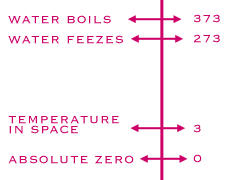 The BEC happens at super low temperatures. We have talked about temperature scales and Kelvin. At zero Kelvin (absolute zero) all molecular motion stops. Scientists have figured out a way to get a temperature only a few billionths of a degree above absolute zero. When temperatures get that low, you can create a BEC with a few special elements. Cornell and Weiman did it with rubidium (Rb).
The BEC happens at super low temperatures. We have talked about temperature scales and Kelvin. At zero Kelvin (absolute zero) all molecular motion stops. Scientists have figured out a way to get a temperature only a few billionths of a degree above absolute zero. When temperatures get that low, you can create a BEC with a few special elements. Cornell and Weiman did it with rubidium (Rb). Let the Clumping Begin
So, it's cold. A cold ice cube is still a solid. When you get to a temperature near absolute zero, something special happens. Atoms begin to clump. The whole process happens at temperatures within a few billionths of a degree, so you won't see this at home. When the temperature becomes that low, the atomic parts can't move at all. They lose almost all of their energy.Since there is no more energy to transfer (as in solids or liquids), all of the atoms have exactly the same levels, like twins. The result of this clumping is the BEC. The group of rubidium atoms sits in the same place, creating a "super atom." There are no longer thousands of separate atoms. They all take on the same qualities and, for our purposes, become one blob.
Plasma Basics
Plasma Basics
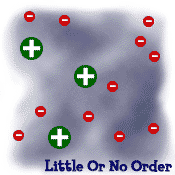 Plasmas are a lot like gases, but the atoms are different, because they are made up of free electrons and ions of an element such as neon (Ne). You don't find naturally occurring plasmas too often when you walk around. They aren't things that happen regularly on Earth.
Plasmas are a lot like gases, but the atoms are different, because they are made up of free electrons and ions of an element such as neon (Ne). You don't find naturally occurring plasmas too often when you walk around. They aren't things that happen regularly on Earth. If you have ever heard of the Northern Lights or ball lightning, you might know that those are types of plasmas. It takes a very special environment to keep plasmas going. They are different and unique from the other states of matter. Plasma is different from a gas, because it is made up of groups of positively and negatively charged particles. In neon gas, the electrons are all bound to the nucleus. In neon plasma, the electrons are free to move around the system.
Finding a Plasma
While natural plasmas aren't found around you that often, man-made plasmas are everywhere. Think about fluorescent light bulbs. They are not like regular light bulbs. Inside the long tube is a gas. Electricity flows through the tube when the light is turned on. The electricity acts as an energy source and charges up the gas. This charging and exciting of the atoms creates glowing plasma inside the bulb. The electricity helps to strip the gas molecules of their electrons.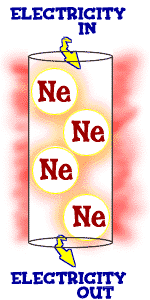 Another example of plasma is a neon sign. Just like a fluorescent lights, neon signs are glass tubes filled with gas. When the light is turned on, the electricity flows through the tube. The electricity charges the gas and creates plasma inside of the tube. The plasma glows a special color depending on what kind of gas is inside. Inert gases are usually used in signs to create different colors. Noble gases such as helium (He), Neon (Ne), Argon (Ar), and Xenon (Xe) are all used in signs.
Another example of plasma is a neon sign. Just like a fluorescent lights, neon signs are glass tubes filled with gas. When the light is turned on, the electricity flows through the tube. The electricity charges the gas and creates plasma inside of the tube. The plasma glows a special color depending on what kind of gas is inside. Inert gases are usually used in signs to create different colors. Noble gases such as helium (He), Neon (Ne), Argon (Ar), and Xenon (Xe) are all used in signs. You also see plasma when you look at stars. Stars are big balls of gases at really high temperatures. The high temperatures charge up the atoms and create plasma. Stars are a good example of how the temperature of plasmas can be very different. Fluorescent lights are cold compared to reallyHOT
 stars. However, they are still both forms of plasma, even with the different physical characteristics.
stars. However, they are still both forms of plasma, even with the different physical characteristics. Saturday, 25 July 2015
solar wind
Solar Wind ParticlesDid you know that the Earth is constantly bombarded with pieces from the Sun? They aren't rocks and flames. The Sun is sending very small particles (usually protons and electrons) into the Solar System. Those particles are called the solar wind. The flow of particles doesn't just go to Earth. The particles hit all of the planets in the Solar System and create an envelope that protects the system.Source Of The WindThe Sun is burning with millions of fusion reactions every second. These reactions superheat the gases surrounding the star and create plasma. When a volcano explodes tons of ash is sent into the sky. The same thing happens on the Sun. The Sun is blasting its plasma out into the Solar System. The speed of the particles depends on how active the Sun is. The particles could move at over a hundred thousand miles in a second.Magnetic FieldsElectricity and magnetism are closely related. Charged particles can hold both an electric current and create a magnetic field. The charged particles given off by the Sun also hold a magnetic field. The particles stretch the magnetic field of the Sun around the planets. Astronomers call it theinterplanetary magnetic field (IMF). You also know the Sun spins. The IMF looks like a spiral (called the Parker Spiral) because of the Sun's rotation.Deflecting The WindIf you are a planet or moon with no magnetic field, the solar wind will hit you directly. That's what happens on the Moon. All of these charged particles are constantly hitting the surface that faces the Sun. If you are a planet that has a magnetic field like Jupiter or the Earth, the solar wind will bedeflected. You can even see the interaction between our magnetic field and the solar winds when auroras are created. The most famous are in the northern hemisphere and called the aurora borealis. Auroras also appear on other planets with magnetic fields. |
Ribosomes - Protein Construction Teams
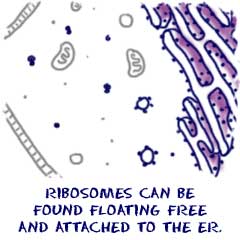 Ribosomes are special because they are found in both prokaryotes and eukaryotes. While a structure such as a nucleus is only found in eukaryotes, every cell needs ribosomes to manufacture proteins. Since there are no membrane-bound organelles in prokaryotes, the ribosomes float free in the cytosol.
Ribosomes are special because they are found in both prokaryotes and eukaryotes. While a structure such as a nucleus is only found in eukaryotes, every cell needs ribosomes to manufacture proteins. Since there are no membrane-bound organelles in prokaryotes, the ribosomes float free in the cytosol. Ribosomes are found in many places around a eukaryotic cell. You might find them floating in the cytosol. Those floating ribosomes make proteins that will be used inside of the cell. Other ribosomes are found on the endoplasmic reticulum. Endoplasmic reticulum with attached ribosomes is called rough ER. It looks bumpy under a microscope. The attached ribosomes make proteins that will be used inside the cell and proteins made for export out of the cell. There are also ribosomes attached to the nuclear envelope. Those ribosomes synthesize proteins that are released into the perinuclear space.
Two Pieces Make the Whole
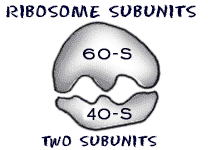 There are two pieces or subunits to every ribosome. In eukaryotes, scientists have identified the 60-S (large) and 40-S (small) subunits. Even though ribosomes have slightly different structures in different species, their functional areas are all very similar.
There are two pieces or subunits to every ribosome. In eukaryotes, scientists have identified the 60-S (large) and 40-S (small) subunits. Even though ribosomes have slightly different structures in different species, their functional areas are all very similar. For example, prokaryotes have ribosomes that are slightly smaller than eukaryotes. The 60-S/ 40-S model works fine for eukaryotic cells while prokaryotic cells have ribosomes made of 50-S and 30-S subunits. It's a small difference, but one of many you will find in the two different types of cells. Scientists have used this difference in ribosome structure to develop drugs that can kill prokaryotic microorganisms which cause disease. There are even structural differences between ribosomes found in the mitochondria and free ribosomes.
Mixing and Matching Amino Acids
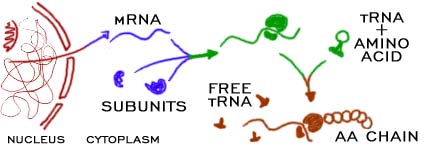
When are ribosomes used in the process of protein synthesis? When the cell needs to make a protein, mRNA is created in the nucleus. The mRNA is then sent out of the nucleus and to the ribosomes. When it is time to make the protein, the two subunits come together and combine with the mRNA. The subunits lock onto the mRNA and start the protein synthesis.
The process of making proteins is quite simple. First, you need an amino acid. Another nucleic acid that lives in the cell is transfer RNA. tRNA is bonded to the amino acids floating around the cell. With the mRNA offering instructions, the ribosome connects to a tRNA and pulls off one amino acid. The tRNA is then released back into the cell and attaches to another amino acid. The ribosome builds a long amino acid (polypeptide) chain that will eventually be part of a larger protein.
Relationships Between Organisms
Relationships Between Organisms
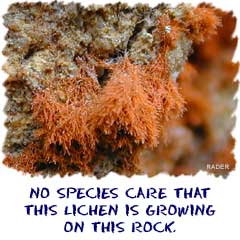 Everything on Earth doesn't exist in its own little bubble. Species interact every day. That interaction is a vital part of how organisms develop and change over time. When you study species, it is important to watch the way they interact with their surroundings. There are four basic types of relationships that living things have with one another.
Everything on Earth doesn't exist in its own little bubble. Species interact every day. That interaction is a vital part of how organisms develop and change over time. When you study species, it is important to watch the way they interact with their surroundings. There are four basic types of relationships that living things have with one another. Commensalism
Sometimes one species can benefit from a relationship and not hurt the other. That relationship describescommensalism. I've got a nice looking branch that no one's using. A plant comes over and settles in. It uses my branch as a place to live. But what do I care? It doesn't bother me. That's what commensalism is all about. One plant gets a place to live and the other doesn't care and is not hurt.Competition
This relationship is when two species are competing for the same resources. If there are only ten trees with fruit and I am better at reaching the fruit than you are, sorry, you don't get any. When you don't get any fruit you die. That's just the way nature works. It could go the other way though. If I kill all of the trees with the high fruit and only low fruit is left, you win.Competition usually happens when you have a limited amount of resources. There is one important idea to remember. Sometimes no one wins. Sometimes if everything is even it can be a stalemate and both species compete, but both survive. Imagine if we are different species, but have the same skills. No one would be a winner in that case.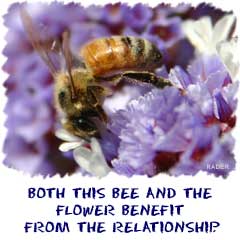
Mutualism
The heart of mutualism is that two species live together in harmony. Both species receive an advantage by working with the other. It's wonderful. It's beautiful. More importantly, it helps them both survive. We previously spoke about the relationships between bugs and plants. That often happens as a mutualism type of relationship. We suppose you could also use rescue dogs as an example. The masters take care of the dogs and the dogs learn how to save people. Everyone benefits in the end.Predator-Prey
There many examples of predator-prey relationships: wolves eating rabbits, frogs eating insects, even a goat eating grass. Grass could be considered the prey. Somebody eats someone else. It's not pretty, but it does encourage the development and advancement of species.Parasitism
There's a special type of predator-prey relationship called parasitism. Now you should think about all the creepy crawlies like fleas, viruses, and mosquitoes. They all feed off a host, not killing it right away but slowly sucking the life out of it. Parasites help no one but themselves.The Top Four Kingdoms
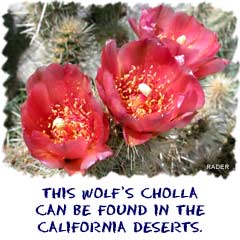 Now we get down to details. We already explained that kingdom is the general way that organisms are described. It is the broadest category for normal classification. Don't forget about the domain grouping, but we aren't talking about the subtle differences between prokaryotic species here. The top four kingdoms are...
Now we get down to details. We already explained that kingdom is the general way that organisms are described. It is the broadest category for normal classification. Don't forget about the domain grouping, but we aren't talking about the subtle differences between prokaryotic species here. The top four kingdoms are... Protista
The protists are usually single celled organisms. They have a distinct nucleus. Some form colonies (or groups of single cells), some act more like animals (they move around and have large cells), and some are even like plants (algae, have chlorophyll and do photosynthesis).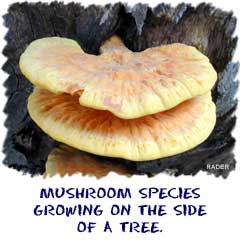
Fungi
This kingdom is made up of the decomposers (they absorb nutrients). Some of the members of this kingdom are fungi, slime molds, yeast, mold, and mushrooms.Plantae
Plantae, hmmm... maybe these are plants? The characteristics of plants are that they have chlorophyll, cell walls (cellulose), and vacuoles. This kingdom also includes red, brown, and green algae.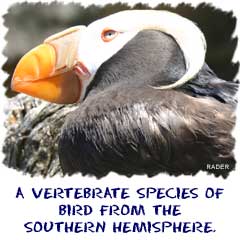
Animalia
Last, but certainly not least, are the animals. These are the most complex organisms on the planet. One big thing about animals is that they must eat other organisms to survive. They cannot create their own food because they do not contain chlorophyll. They are able to move around, and most have sense organs of some type. Because they have those sense organs, they have nervous systems. Animals include species such as anemone, insects, lizards, and mammals.Logical Reasoning
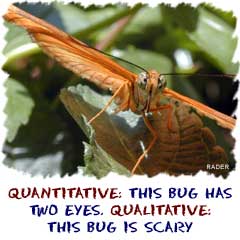 The scientific method is a rational, logical thought process that is used to figure out facts and truths. All of the answers must be able to be proved. When someone comes up and says, "Hey! I figured out the answer!" the other scientists can get together, see what the new person did, and then they repeat the procedures. If they come up with the same answer, everybody is happy. If the answer is different, someone did something wrong and everyone starts all over again.
The scientific method is a rational, logical thought process that is used to figure out facts and truths. All of the answers must be able to be proved. When someone comes up and says, "Hey! I figured out the answer!" the other scientists can get together, see what the new person did, and then they repeat the procedures. If they come up with the same answer, everybody is happy. If the answer is different, someone did something wrong and everyone starts all over again. There are no opinions that are considered scientific laws. To scientists, the truth is something that is quantitative. Quantitative statements are ones that can be proved through experiments. When someone has an opinion, or an idea that can't be proved directly, they call it a qualitative argument.
Deductive Reasoning
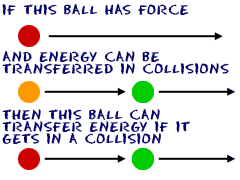 Deductive reasoning has you starting with information or an idea that is called apremise. Eventually you come up withconclusions that are based on your original premise. Sherlock Holmes, that detective guy from the books, uses deductive reasoning to solve mysteries. Think of it this way:
Deductive reasoning has you starting with information or an idea that is called apremise. Eventually you come up withconclusions that are based on your original premise. Sherlock Holmes, that detective guy from the books, uses deductive reasoning to solve mysteries. Think of it this way:(1) If this happens...
(2) and this happens...
(3) then you can come to this conclusion. If the premises are true, then your conclusion should also be true.
Inductive Reasoning
Inductive reasoning works in the opposite direction. You start by having a number of observations. "I see that." "That happens here." "I believe that this will happen just like the others because the circumstance is similar."It is a process in two parts. First you start with specifics and come up with a theory. That's deductive. When you apply that theory to new areas, it is inductive reasoning. You organize data into categories and say, "What do these have in common?"
There is a problem with inductive reasoning: your conclusions have more information than the facts you use. You start with dozens of observed examples, take an inductive leap, and assume millions of possible examples. If the conclusion is true, then new premises and assumptions are true.
Reasoning in Science
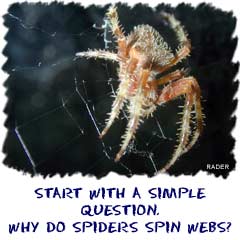 Learning about the scientific method is almost like saying that you are learning how to learn. The scientific method is a process used by scientists to study the world around them. It can also be used to test whether any statement is accurate. You can use the scientific method to study a leaf, a dog, an ocean, or the entire Universe.
Learning about the scientific method is almost like saying that you are learning how to learn. The scientific method is a process used by scientists to study the world around them. It can also be used to test whether any statement is accurate. You can use the scientific method to study a leaf, a dog, an ocean, or the entire Universe. We all have questions about the world. The scientific method is there to test if your answer was correct. You could ask, "Why do dogs and cats have hair?" One answer might be that it keeps them warm. A good scientist would then come up with an experiment to test whether the statement was accurate. BOOM! It's the scientific method in action. (OK, settle down.)
Questions and Answers
Just about everything starts with a question. Usually, scientists come up with questions by looking at the world around them. "What is that?" See that squiggly thing at the end of the sentence? A question has been born.So you've got a scientist. When scientists see something they don't understand they have some huge urge to answer questions and discover new things. It's one of those scientist personality traits. The trick is that you have to be able to offer some evidence that confirms every answer you give. If you can't test your own answer, other scientists can't test it to see if you were right or not.
 As more questions are asked, scientists build a foundation of answers. Once you have a lot of individual answers, it’s time to organize. One of the cool things about science is that other scientists can learn things from what has already been established. They don't have to go out and test everything again and again. Science is special because it builds on what has been learned before.
As more questions are asked, scientists build a foundation of answers. Once you have a lot of individual answers, it’s time to organize. One of the cool things about science is that other scientists can learn things from what has already been established. They don't have to go out and test everything again and again. Science is special because it builds on what has been learned before. The whole process allows the world to advance, evolve, and grow. All of today's advancements are based on the achievements of scientists who already did great work. For example, you will never have to show that water (H2O) is composed of one oxygen (O) and two hydrogen (H) atoms. Many scientists before you have confirmed that fact. It will be your job as a new scientist to take that knowledge and use it in new experiments.
Experimental Evidence
Experimental evidence is used to confirm the answers in science. Results are validated (found truthful) when other scientists repeat experiments and come up with the same results. A history of evidence and validations show that the original statements were correct and accurate. It is a simple idea and the basis of all science. Statements must be confirmed with loads of evidence.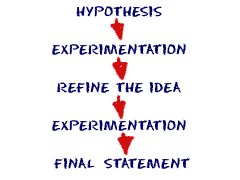 Scientists start with general observations and then make ahypothesis. A hypothesis is somewhere between a statement and a guess. It is a proposed explanation for something that was observed. One example of a hypothesis might be, "All flowers are yellow."
Scientists start with general observations and then make ahypothesis. A hypothesis is somewhere between a statement and a guess. It is a proposed explanation for something that was observed. One example of a hypothesis might be, "All flowers are yellow." Once you have a scientific hypothesis, the fun can begin. You need to test the hypothesis with an experiment and a series of procedures. The trials and tests will lead to observations and data. The data is the evidence you can use to determine if the hypothesis was correct.
It is very important that the experiment is objective. You must use controls which are quantitative (based on values and figures, not opinions or emotions). Scientists can then examine the results and develop newer ideas. This process will lead to more observation and refinement of hypotheses. Science needs both ideas (the hypothesis) and facts (the quantitative results) to move forward.
So what about that first hypothesis? Are all flowers yellow? No they aren’t. Why? We went outside and took a picture of a red flower. The existence of one red flower means the original hypothesis was incorrect. A curious scientist might make another hypothesis that says all flowers are red or yellow. You could test that hypothesis by looking at a larger variety of flowers.
Accumulation of Evidence
There are different terms used to describe scientific ideas based on the amount of confirmed experimental evidence.Hypothesis - a statement that uses a few observations
- an idea or proposition based on observations without experimental evidence
Theory
- uses many observations and has loads of experimental evidence
- can be applied to unrelated facts and new relationships
- flexible enough to be modified if new data/evidence introduced
Law
- stands the test of time, often without change
- experimentally confirmed over and over
- can create true predictions for different situations
- has uniformity and is universal
You may also hear about the term "model." A model is a scientific statement that has some experimental validity or is a scientific concept that is only accurate under limited situations. Models do not work or apply under all situations in all environments. They are not universal ideas like a law or theory. Climatologists use many models to predict climate changes. Each model is dependent on specific variables and situations.
Friday, 24 July 2015
Velocity
Velocity
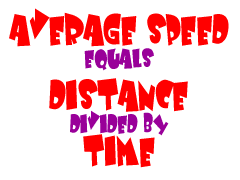 Velocity and speed are very similar ideas, but velocity is a vector, and speed is not. Suppose we knew that someone was driving at thirty-five kilometers an hour (35 km/hr), but the direction wasn't given. How would you draw an arrow to represent a vector? You can't know how to draw the vector if you only have one value (either amount or direction). In this example, you were never told about the direction. Physicists would say that the speed is thirty-five kilometers an hour (35 km/hr), but the velocity is unknown. On the other hand, if you're moving at 35 km/hr in a northern direction, then you would have an arrow pointing north with a length of 35. Physicists would say that the velocity is 35 km/hr north.
Velocity and speed are very similar ideas, but velocity is a vector, and speed is not. Suppose we knew that someone was driving at thirty-five kilometers an hour (35 km/hr), but the direction wasn't given. How would you draw an arrow to represent a vector? You can't know how to draw the vector if you only have one value (either amount or direction). In this example, you were never told about the direction. Physicists would say that the speed is thirty-five kilometers an hour (35 km/hr), but the velocity is unknown. On the other hand, if you're moving at 35 km/hr in a northern direction, then you would have an arrow pointing north with a length of 35. Physicists would say that the velocity is 35 km/hr north. Velocity is the rate of motion in a specific direction. I'm going that-a-way at 30 kilometers per hour. My velocity is 30 kilometers per hour that-a-way. Average speed is described as a measure of distance divided by time. Velocity can be constant, or it can change (acceleration). Speed with a direction is velocity.
Remember vectors? You will use a lot of vectors when you work with velocity. Our real world example of navigation on the ocean used velocity for every vector. Velocity is a vector measurement because it has an amount and a direction. Speed is only an amount (a scalar). Speed doesn't tell the whole story to a physicist. Think of it another way. If I tell you I'm driving north and ask you how long until we get to the city. You can't know the answer since you don't know my speed. You need both values.
One Moment in Time
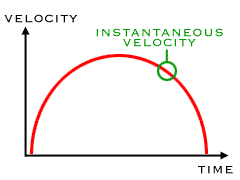 There is a special thing calledinstantaneous velocity. That's the velocity at a split second in time. Above, we were talking about your speed and direction over a long period of time. Why would you need to measure a velocity at one moment? Think about the moment you drove over the manhole. It's important to know if you were going 1 km/hr when you drove over the manhole, or 60 km/hr. It wouldn't help you to know that your average speed was 30 km/hr.
There is a special thing calledinstantaneous velocity. That's the velocity at a split second in time. Above, we were talking about your speed and direction over a long period of time. Why would you need to measure a velocity at one moment? Think about the moment you drove over the manhole. It's important to know if you were going 1 km/hr when you drove over the manhole, or 60 km/hr. It wouldn't help you to know that your average speed was 30 km/hr. The term "instantaneous" refers to something physicists call a limit. Scientists "limit" the amount of time they do the measurement. When the "limit" moves to zero, that limit is one tiny moment in time. A physicist would measure your velocity as the "limit for a period of time", zero, to get the instantaneous velocity.
Changing Your Velocity
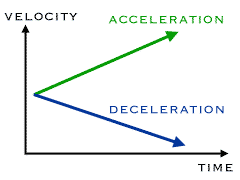 When velocity is changing, the wordacceleration is used. Acceleration is also a vector. You speed up if the acceleration and velocity point in the same direction. You slow down (also referred to asdecelerating) if the acceleration and velocity point in opposite directions. When you accelerate or decelerate, you change your velocity by a specific amount over a specific amount of time.
When velocity is changing, the wordacceleration is used. Acceleration is also a vector. You speed up if the acceleration and velocity point in the same direction. You slow down (also referred to asdecelerating) if the acceleration and velocity point in opposite directions. When you accelerate or decelerate, you change your velocity by a specific amount over a specific amount of time. Just as with velocity, there is something called instantaneous acceleration. Instantaneous means scientists measure your acceleration for a specific moment of time. That way they can say he was accelerating at exactly this amount at this point during his trip.
Constant Acceleration
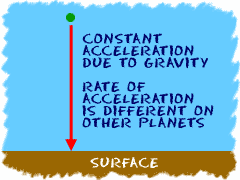 There are a few special situations where acceleration may be constant. This type of acceleration happens when there is a constant net force applied. The best example is gravity. Gravity's pull on objects is a constant here on Earth and it always pulls toward the center of the planet (Note: Gravity decreases as you move far away from the surface of the planet.). The gravities of other planets are different from Earth's gravity because they may have different masses and/or sizes. Even though the gravity may be smaller or larger, it will still create a constant acceleration near the surface of each planet.
There are a few special situations where acceleration may be constant. This type of acceleration happens when there is a constant net force applied. The best example is gravity. Gravity's pull on objects is a constant here on Earth and it always pulls toward the center of the planet (Note: Gravity decreases as you move far away from the surface of the planet.). The gravities of other planets are different from Earth's gravity because they may have different masses and/or sizes. Even though the gravity may be smaller or larger, it will still create a constant acceleration near the surface of each planet. 










